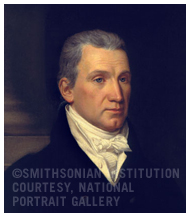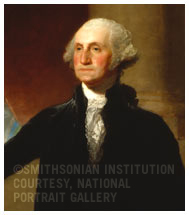 James Monroe by John Vanderlyn, oil on canvas, 1816
James Monroe by John Vanderlyn, oil on canvas, 1816Courtesy National Portrait Gallery, Smithsonian Institution, NPG.70.59
Malaria was a significant problem in Washington, DC and the southern states of the country until the middle of the twentieth century. George Washington,
who became the first president of the United States, contracted malaria when he was seventeen years old. He experienced several relapses later in life. President James Monroe was
one of several other residents of the White House to suffer from the disease. He was infected while visiting swampland along the Mississippi River in 1785.
The National Malaria Eradication Program was launched in 1947 by the Centers for Disease Control and Prevention and public health agencies from thirteen
Southeastern states. They were able to eradicate the disease by 1951, in part by draining mosquito breeding grounds and spraying the insecticide dichloro-diphenyl-trichloroethane
(DDT). Although DDT was later banned because of its toxicity and the development of insecticide-resistant mosquitoes, the World Health Organization has since advocated limited use
to help control malaria.

